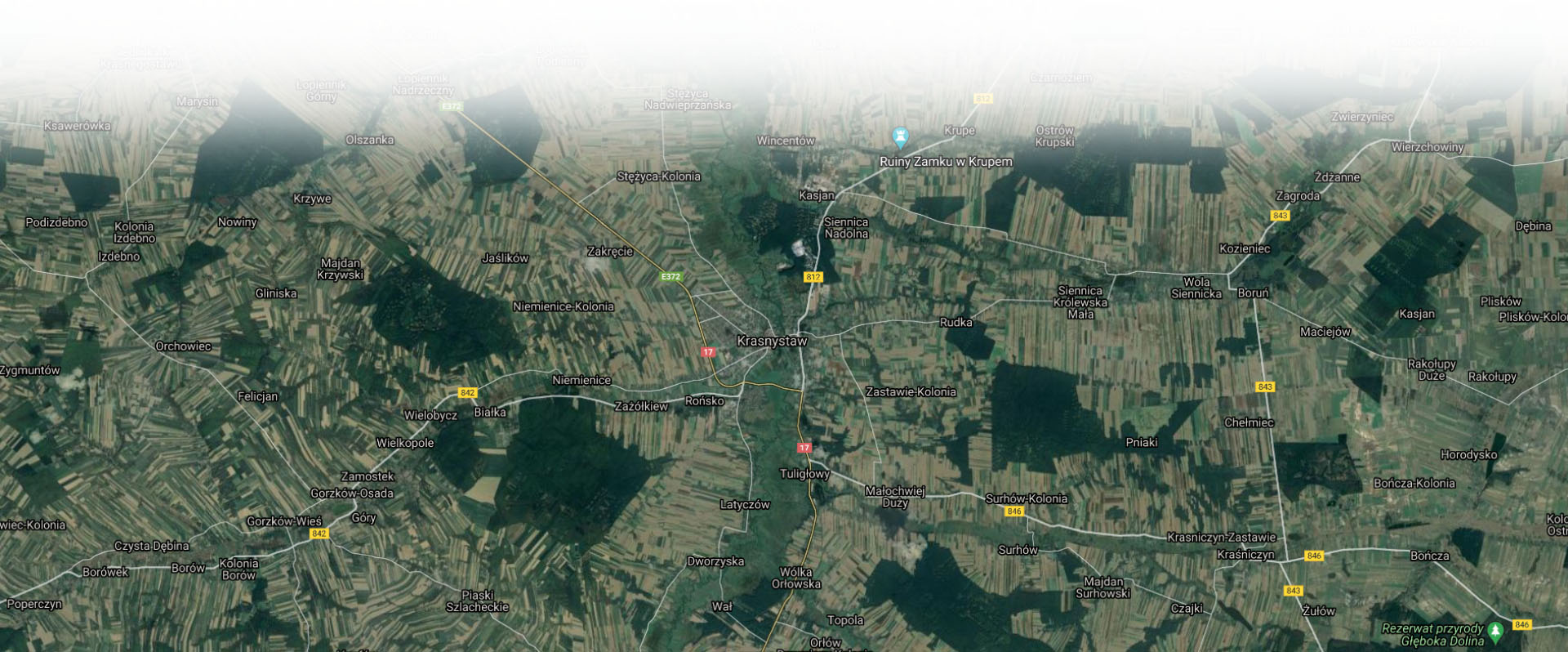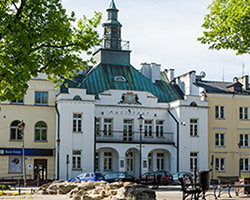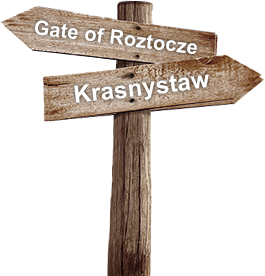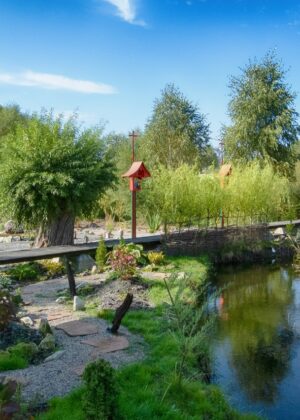
of noteworthy

Protected

landscapes
welcome to the guide page
Krasnystaw
and nature
If you are looking for an idea for a nice time, you are looking for history, interesting and a place also outdoors, you’ve come to the right place! You can experience unforgettable moments, get to know the beauty of the surroundings and enjoy a moment of relaxation.
We have included over 15 places worth visiting and visiting on the website.
your guide
Krasnystaw
Gate of Roztocze
On the map below you will find places rich in history, unique atmosphere and positive energy. The treasures and pearls of the Roztocze Gate are waiting for you.

01


Rynek miejski

guide
Notable
places and surroundings
Below you will find a list of the most interesting places and surroundings that you will remember after visiting.
The former men’s gymnasium
The building administrated by Special School and Educational Centre has got quite rich history and at the same time important for the national identity of the society of Krasnystaw.
It was built at the beginning of the last century for the purpose of a casino for the officers of the tsarist garrison. During the period of intense fighting for Krasnystaw in the summer 1914 and in the summer 1915 military lazerat was located there. On January 3rd 1917 Austrian occupation authorities agreed to open a men's gymnasium for young people from Krasnystaw. It was the first Polish Real Gymnasium in Krasnystaw. It functioned for many years and over time girls also could study in this school. The first director of the Men's Gymnasium in Krasnystaw was a Polish officer, captain of Austro-Hungarian army Jan Wowczak. It is a classic example of the numerous presence of our compatriots in the uniforms of the armies of the partitioning states on almost every fronts of World War I. During World War II German occupiers closed the gymnasium, because Polish childern were not allowed to educated themselves more than in public school and vocational school. Over the period of the German occupation the garrison headquarters were located here. After war students came back to this building again. Special School and Educational Centre of the name of Maria Doroszewska began functioning here in 1968.
The manor complex
In the mid-nineteenth century, the lands of the complex belonged to the nearby Roman Catholic parish of St. Francis Xavier. The former manor house was erected in the first half of the nineteenth century. It was built in the classicist style, facing south. It is wooden, plastered and has a basement with a four-column portico from the front.
In 1865 the tsarist authorities confiscated the property, that came under the control of the empire's treasury, specifically the authorities of the governorate. It was leased first to the Dziewicki family, who lived in Krasnystaw for many years. After the stay of the Dziewicki family, a souvenir in the form of a modest building was left in our city. It is the grave of the family in the parish cemetery in Krasnystaw. The last tenants were the Radomyski family. Henryk Radomyski served as the mayor of Krasnystaw. He was arrested by Germans and murdered at the Lublin Castle in February 1942.
After 1944, the manor land was parceled out and the buildings were handed over to various institutions. The government estate "Starostwo Krasnostawskie" consisted of two manors before the war: „Starostwo”, on the territory of which the manor house stood and the grange "Rońsko". Currently, the manor house has undergone a thorough renovation and since October 2015 it has been the seat of the Center for Social Integration.
- The manor complex
- Sikorskiego 10, 22-300 Krasnystaw
The castle in Krupe
It is considered as the largest castle in Poland. It was erected on the eastern side of the Vistula River. The castle was built and expanded at the end of the XVI century on the site of the former family seat of the Krupski family by the Chełm chamberlain Paweł Orzechowski, coat of arms Rogala. It was expanded in 1604 – 1608. The castle was in the hands of the Orzechowski family until 1644. This historical building was located on a platform similar to a rectangle. An ensemble consists of the proper castle and the castle boroughs. These buildings form a closed fortified circuit. It is made of stone and brick. The castle proper is located in the western part and separated by an internal moat, included in the perimeter of the defensive walls with bastions on the north-east and south corners. In the area of castle boroughs there was once an economic courtyard with buildings and the main entrance from the north-east with a drawbridge and a gate. The castle was destroyed in 1648 – 1660 during the Cossack invasion and the Swedish Deluge. Since the second half of the XVIII century, the castle has been in ruins.
The town hall
The town hall is a flagship building in every city center. Soi t is in Krasnystaw. Archeologine research indicates that it was originally located in the middle of the town square. Burned down during the great fire of Krasnystaw which took place in 1878. The current town hall is a building from the beginning of the twentieth century. This is evidenced, for example, by postcards from Krasnystaw made in 1914, on which it is just visible. On websites it is erroneously stated that the town hall was built in the interwar period. However, it is only true that in the interwar period in 1928 it was rebuilt after serious destruction caused by the battles for the town in August 1914 and in July 1915. In recent years, the façade of the building has been restored.
The park
At the beginning of the XVI century, the town was fortified with a defensive wall and a moat. The walls were about 2.6 m thick. They had several towers and three gates. The urban layout of the town has been preserved in its main part the same as in the Middle Ages. The market square has compact buildings from the XVIII - XIX centuries. Particularly valuable in terms of historic are the frontages: north and east. The houses have late Baroque and classicist facades. Under the entire old town there is a network of corridor and chamber type dungeons drilled in loess, in three and sometimes five floors. After the fall of the November Uprising, the governorate authorities issued an order that the employees of the Krasnystaw Magistrate cause the planting of trees in the park. They were supposed to give shade to tsarist officers and officials with their families walking on holidays. In honor of Tsar Alexander II, the park was named Alexandria Square.
Surrounded by tenement houses, the town square was paved and there the army arranged parade drills. In the central place of the market the town hall was situated. Its foundations have remained to this day. The second important building with a similar character to the town hall was ‘Dom Sejmikowy’, located at the market square. During the fighting in the years 1914 – 1915, at least half of the buildings in the market square were destroyed, including the town hall and the ‘sejmik’ building rebuilt in 1923.
In 1916, the Austrian occupation authorities established the first town council in Krasnystaw. It was located in a tenement house at the corner of the present Poniatowskiego Street and 3 Maja Square, where the seat - the city magistrate - was temporarily located. The councillors elected the mayor of the town and his deputy from among themselves. The council dealt with solving the issues of the town's population, the functioning of institutions subordinate to the magistrate and submitted postulates to the occupation authorities mainly for help for residents. In 1919, the Town Square was named May 3 Square in memory of the events of 1917, when a huge demonstration was held here in honor of the promulgation of the Constitution of May 3, 1791.
One of the most outstanding Polish graphic designers of the XIX century, Antoni Oleszczyński, was born in Krasnystaw. On the wall of one of the restored tenement houses by the park, you can see a commemorative plaque dedicated to him. He was associated with Krasnystaw, where he was born at the end of the XVIII century. He lived from 1794 to 1879, of which he spent over 50 years in France. As an emigrant, he missed Poland very much, to which he never returned. He was a talented graphic designer, he left behind many souvenirs, a modest part of which is owned by the Regional Museum in Krasnystaw. Currently, it has a collection of Antoni Oleszczyński's steel ricites numbering over 200 items, including copies with a handwritten description of the author.
In 2008, the town square was restored.
The way of life of the Blessed Priest Zygmunt Pisarski
In October 2017, the ceremonial opening of the pilgrimage route ‘The way of life of the Blessed Priest Zygmunt Pisarski’ took place. Individual places are called ‘Stations’. The originator and coordinator of the creation of the trail was Zbigniew Atras. This trail presents 12 places in Krasnystaw related to the life of the Blessed Priest Zygmunt Pisarski. In each of these places there is an information board. On 3rd June 1999 Pope John Paul II beatified 108 martyrs from the last war, among them was Blessed Priest Zygmunt Pisarski. On 13th June 2021 on the town square in Krasnystaw there were celebrations related to the granting of the patron in person of Blessed Priest Zygmunt Pisarski to the city of Krasnystaw and the 627th anniversary of granting city rights.
More information about the trail can be found on the website:
www.pielgrzymkrasnostawski.pl
Former Augustinian ensemble
We do not know the exact date of arrival of the Augustinians to Krasnystaw. We know with certainty that the buildings of the Augustinian church and monastery, erected in the years 1394 – 1434 and existing to this day, were founded by king Władysław Jagiełło. They were built of stone and bricks in the Gothic style of a defensive character and situated next to the Piast castle. Monastery buildings were located within the city walls. The monastery and the church of the Holy Trinity included in the complex are the oldest existing sacral buildings of the Krasnystaw land. In 1449 the complex was destroyed by the Tatars, but already in 1458 it was rebuilt by Kazimierz Jagielończyk. Subsequent rulers: Aleksander Jagielończyk and Zygmunt August, appreciating the missionary work of the Order, granted it numerous privileges and generously endowed it. The Augustinians were well educated, because the Order imposed the obligation to study. Just as the Dominicans and Franciscans they had the right to confess and proclaim the word of God, which was probably their main task, because the area of the Diocese of Chełm required a great deal of missionary work. Pope Boniface VIII granted the Augustinian Order special privileges, namely the right to establish cemeteries in his monasteries, where every believer could be buried.
Since 1648 there were terrible and destructive wars in Poland. In the east of the country, a Cossack rebellion, started by Chmielnicki, broke out. The Ukrainian rebels showed no mercy. Churches, mansions and entire provinces were burned, castles were demolished. Priests, monks, nobles and simple people, including women and children, were murdered. Everything that was Polish and Catholic was destroyed. The Cossacks, unable to conquer Zamość in 1649, plundered, among others, the Krasnystaw land in retaliation. After conquering Krasnystaw, they completely ravaged it, also burning city files.
In the spring of 1657, the Hungarian soldiers of Prince Rakoczy and the Cossacks accompanying them ravaged Krasnystaw and burned the Augustinian monastery. At that time the archives of the Augustinian Order gathered in the monastery burned down. In the years 1755-1766, thanks to the great benefactors of the Order, who was, among others, Katarzyna Radziwiłłów from Sobieski, the church of the Holy Trinity was renovated, while the monastery was built from scratch.
After the dissolution of the Order of Augustinian priests by the tsarist authorities in 1864, its rather substantial property reaching 700 morgs of land was parceled out. The clerics were allowed to keep only liturgical vestments, books from the rich at that time library and paintings of saints. The facilities, transformed into barracks, were taken over by the Russian army. In the interwar period, a communication company of the Polish Army was located in the barracks. Today, this place is under the management of the Tadeusz Kościuszko High School Complex No. 1. At the present Zamkowa Street, the remains of the once impressive church and monastery complex of Augustinian priests have been preserved.
Biblical Garden of St. John Paul II
At the back of the former seminary there is a Biblical Garden of St. John Paul II. It spreads on the surface of 3 hectares. A prelate Henryk Kapica, a former parish priest of the St. Francis’s Church, was an originator and founder of this garden.The main theme of the garden were Stations ot the Cross. The official opening took place on June 17th 2012. There are about 100 species of biblical plants. There is a plate with Polish and Latin name at each plant, a scripture quote and a few sentences about this plant. The garden abounds in plants rarely grown in Poland (including Babylonian willow, ‘burning bush’). For winter lots of these plants are transferred to plants are transferred to the interior of the Jesuit college and the church, where temperature is more close to natural.
Next to the aforementioned Carmel, a garden was created in honor of the great missionary St. Franciszek Ksawery, patron of the local parish. It was arranged according to the art of Japan and China, i.e. wind and water. The centre of the garden is occupied by a chinese – style chapel. The harmony of the garden was achieved through soft shapes and flowing lines, uneven terrain, winding paths and water reservoirs. The composition of the garden is complemented, among others, by plants: Chinese metasequoia, Manchurian willow, Japanese golden-grained, star magnolia, palm maples.
The last part of the garden is consecrated in honor of the blessed priest Zygmunt Pisarski. Its centre is a chapel in the Old Polish style.
Already at the end of August
Chmielaki
Krasnostawskie
Krasnystaw The Gate of Roztocze
We invite you to the depths of beauty culture and surroundings of the region
JOIN NOW








